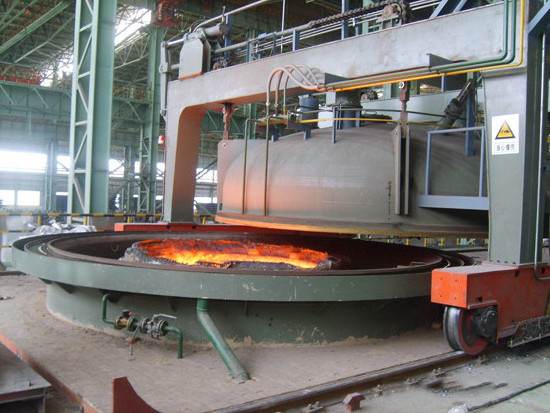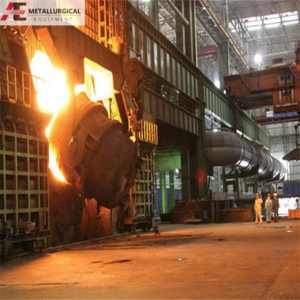- Product Details
- {{item.text}}
Quick Details
-
Dimension(L*W*H):
-
Customization Size
-
Weight (T):
-
50 T
-
Power (kW):
-
4000
-
Keyword:
-
VD/VOD Funace
-
Heat Source:
-
Electric Arc
-
Melting Material:
-
Scrap Steel
-
Final product:
-
Quality Carbon Steel
-
Raw material:
-
Scrap Steel Iron
-
Feature:
-
Energy Saving
-
Application:
-
Steel making
-
Capacity:
-
50ton-120ton
-
Furnace type:
-
Top Loading
-
Product Name:
-
VD/VOD Furnace
Quick Details
-
Place of Origin:
-
Shaanxi, China
-
Brand Name:
-
HAN
-
Voltage:
-
10KVA
-
Dimension(L*W*H):
-
Customization Size
-
Weight (T):
-
50 T
-
Power (kW):
-
4000
-
Keyword:
-
VD/VOD Funace
-
Heat Source:
-
Electric Arc
-
Melting Material:
-
Scrap Steel
-
Final product:
-
Quality Carbon Steel
-
Raw material:
-
Scrap Steel Iron
-
Feature:
-
Energy Saving
-
Application:
-
Steel making
-
Capacity:
-
50ton-120ton
-
Furnace type:
-
Top Loading
-
Product Name:
-
VD/VOD Furnace
Products Description
Refining process description of VD furnace
1.Dehydrogenation
When the vacuum degree is ≤ 133Pa, the hydrogen content in the molten steel [H] is ≤ 1.5 ppm. Due to the fact that
the hydrogen content in the molten steel during vacuum treatment is related to factors such as operating process,
steel grade, state of various raw materials added to the furnace, and argon stirring state, in order to ensure that the hydrogen content in the molten steel is ≤ 1.5 ppm and improve the dehydrogenation rate, the working vacuum degree
of the vacuum system is determined to be below 67Pa, fully ensuring the requirements of the dehydrogenation process.
2. Denitrification
The relationship between the saturation concentration of hydrogen and nitrogen in molten steel and the partial pressure
of hydrogen and nitrogen above the melt.However, the nitrogen content in molten steel is closely related to the content
of alloy elements in the steel, making it difficult to remove nitrogen. Therefore, try to reduce the nitrogen content in the steel before VD treatment and extend the VD treatment time.
3. Desulfurization
The content of sulfur in steel is also related to oxygen and often maintains a constant proportion, so the deoxidation process of vacuum treatment is also a desulfurization process. In order to obtain steel grades with extremely low
sulfur content, some elements with strong affinity for sulfur were used as desulfurizers for desulfurization.
4. Argon stirring
Argon gas is blown into the ladle through the argon blowing port of the breathable brick at the bottom of the ladle to
stir the molten steel, causing it to circulate within the ladle. Its function is to create more favorable conditions for the physical and chemical reactions of the molten steel inside the ladle.In order to ensure the effective and smooth
operation of the entire refining argon stirring process, each vacuum tank in this design adopts an independent argon
flow rate adjustment system, and the argon flow rate is controlled by a dedicated mass flow control module, thereby achieving precise automatic adjustment of argon gas volume.




Technological Process
VD
Technological process
: The bridge crane will lift the refined molten steel ladle from the LF furnace into the vacuum tank, and the vacuum cover truck will be driven to the vacuum treatment station for temperature measurement and sampling. Then, the vacuum tank lid descends onto the vacuum tank and closes the lid. Start the vacuum pump for vacuum extraction, and when the vacuum degree reaches 67Pa, enter the high vacuum degassing treatment. Start to maintain the vacuum for 15-20 minutes. After the treatment is completed, close the vacuum main valve → break the vacuum → lift the ladle cover → temperature measurement and sampling → drive the vacuum cover car to the standby position → stop argon blowing → lift the ladle to the continuous casting station.
Equipment
|
Vacuum tank
|
Vacuum pump system
|
|
Vacuum tank cover and its lifting mobile car
|
Vacuum pipeline system connecting the tank to the vacuum pump
|
|
Vacuum feeding device
|
Control and monitoring equipment
|
Packing & Shipping
Customer Photos
Hot Searches













